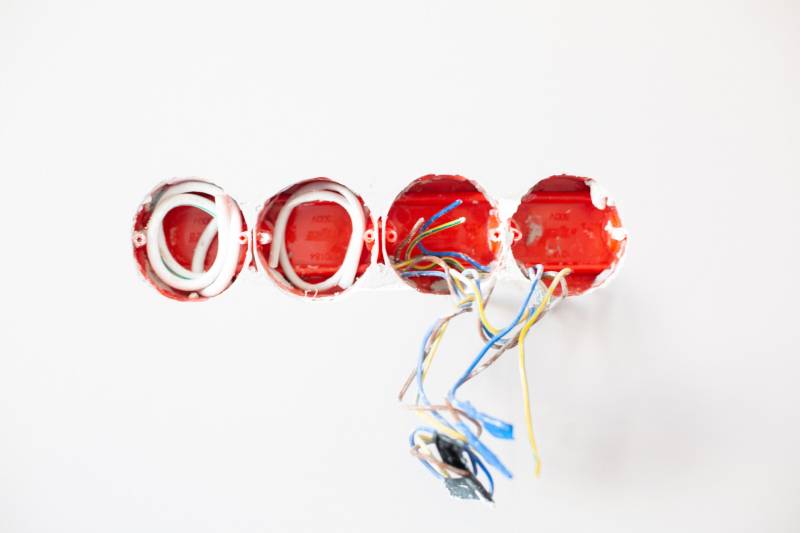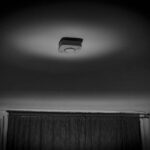Table of Contents
Wired outlets are pretty essential in our everyday lives in the era of electricity. Almost all our livelihood’s daily belongings depend on them. All the household appliances, from your water heater to luxurious cars, microwave, charging outlet, etc.

A path through which current travels is called an electrical circuit.
There are mainly two types of circuits, Series Circuit and Parallel Circuit. Now, what are these? They both have distinguishable features that set them very much apart.
Wiring Outlets In Series Circuit
A series circuit is a closed circuit through which the whole current flows in one path and goes through all the devices in this circuit course. In this circuit, the current remains the same while the voltage varies.
If any of the connected components in this circuit breaks or fails, the entire course will be disrupted. The series circuit can be seen used in factories to power lights, fans in large quantities. One single switch makes it a lot easier to control more numbers of devices.
Direct Current or DC is also more prevalent with Series Circuit. Christmas lights and street lamps are also primarily connected in Series for being handy.
Nowadays, for instance, street lamps and some LED Christmas lights are connected in parallel because it does not interrupt the whole circuit if one of the lights is faulty.
Wiring Outlets In Parallel Circuit
As the name suggests, parallel circuits are configured in parallel paths so that current divides and flows through only one of the paths.
It has multiple branches that hold different devices or components which connect to complete an entire circuit. In our standardized 120 volts household circuits, all household appliances, such as fans, lights, electrical outlets, room heaters, air conditioners, etc., are connected in parallel.
In this way, the current gets divided among different outlets, and we can use one switch to turn the fan on and the other to turn on the light. Even if one of them gets disrupted, the entire circuit doesn’t fall.
However, in a parallel circuit, the voltage across each branch of a parallel circuit is the same, but the current varies, vice-versa to the Series Circuit.
A crucial use of parallel circuits is in car lights. If they are in series, both the lights will stop working simultaneously if there is one fault in the closed circuit. If one of the lights fails and the other one also does not work, it would be a considerable safety hazard.
Wiring Outlets In Series Vs. Parallel
- Both of them have closed circuits.
- Series Circuit has one path, whereas Parallel Circuit has multiple branches.
- Series Circuit gives out less power. For every load you add in Series, the voltage decreases across each load; thus, the lights will dim, and the fans will be slower, whereas Parallel Circuit gives out more power.
- In Series, failure affects all the devices, whereas it only disrupts the particular path in parallel.
- In Series, the voltage varies, but in parallel, the current varies.
- Series is considered an unreliable source, while parallel circuits are almost seen everywhere, making it pretty convenient and reliable.
Benefits Of Wiring Outlets In Series
One of the foremost defining characteristics of a circuit is the undeniable fact that this has a single path through which it flows. Thus, if the circuit is opened at any location, every component on that circuit will lose power until the course is closed again.
If the lights in our houses are in series, each one is wired directly to the next. If one light bulb fails, the remainder of the electric bulbs will not function during this circuit until the error is fixed.
Also, the more light bulbs that are added to the present circuit, the less bright each bulb will shine due to the added resistance and decreased current in this circuit. Switches or relays and other devices are connected in series as a sort of safety measure.

Once all the components are in a specific state, the circuit will be energized, allowing current to pass through it. It can be a generator or a motor. If we wire in series, it leads to a much safer choice for industrial applications.
If we want to power a machine in series, it needs to pass through a resistor and a relay switch before the device to be powered. Once the relay is closed and the switch is closed, power can pass through, eventually leading the machine to work.
Benefits Of Wiring Outlets In Parallel
In a parallel circuit, all the components are wired in parallel with voltage drops. The parallel circuit will have different amounts of current passing through each element due to different branches depending on the resistance of that component.
The sum of the current that passes through all the components will be equal to the circuit’s total current.
Components or appliances within the circuit may fail or are disconnected may, other branches of the circuit wired in parallel will still function normally. If several light bulbs are wired together in parallel, that’s to say; each bulb will have its own path for electricity.
Also, the number of bulbs added to the circuit will not impact how brightly the bulbs will shine. The more bulbs added it would increase the current draw from the power source of the circuit. One specific industrial application can be commonly seen in industrial control panels.
It is common to see the different devices wired to the main power bus in parallel connection when the power distribution is made to monitor the industrial control panel.
This allows the different devices individually to receive the necessary power from the outlets that are needed for the industrial application without depending on other devices to ensure that power is being provided.
So, Is Wiring Outlets Better In Series Or Parallel?
Based on the above, we can say that the series circuit is best for the industrial environment, christmas lights, and street lamps, making it easier to control. In that case, wiring outlets in series is the way to go.
It is more convenient to manage a large number of components where the same amount of current passes in one path through the entire circuit. On the other hand, parallel circuits are primarily used in household environments in our daily lives.
The fans, lights, and electricity outlets help charge the electricity-based devices around the house; otherwise, if one path broke in the circuit, the entire house would be without electricity.
Thus, in the case of wiring houses, cars, controllers, and other devices in this age, people prefer to use parallel circuits to wire outlets to be safer.
Anything that could cause disruption can cause massive havoc, just like going out of electricity every time there is a break or having two broken headlights. These may lead to life-endangering severe factors; thus, parallel circuits should be considered the right option.




![Screws or Nails for Framing - Which Should I Use? [Guide] Screws or Nails for Framing - Which Should I Use? [Guide]](https://homesteadandprepper.com/wp-content/uploads/2021/10/Nails-or-screws-for-framing-150x150.jpg)


